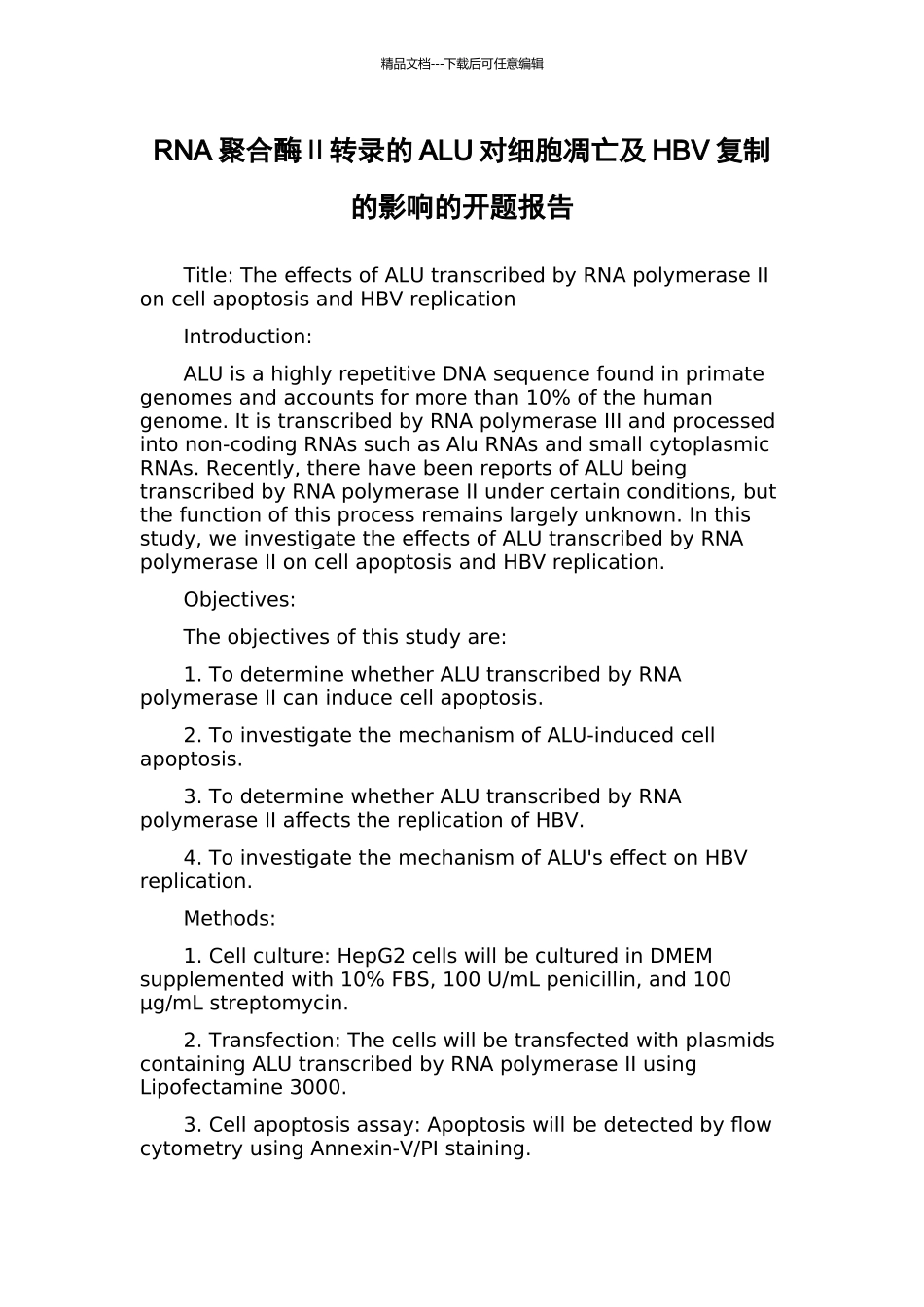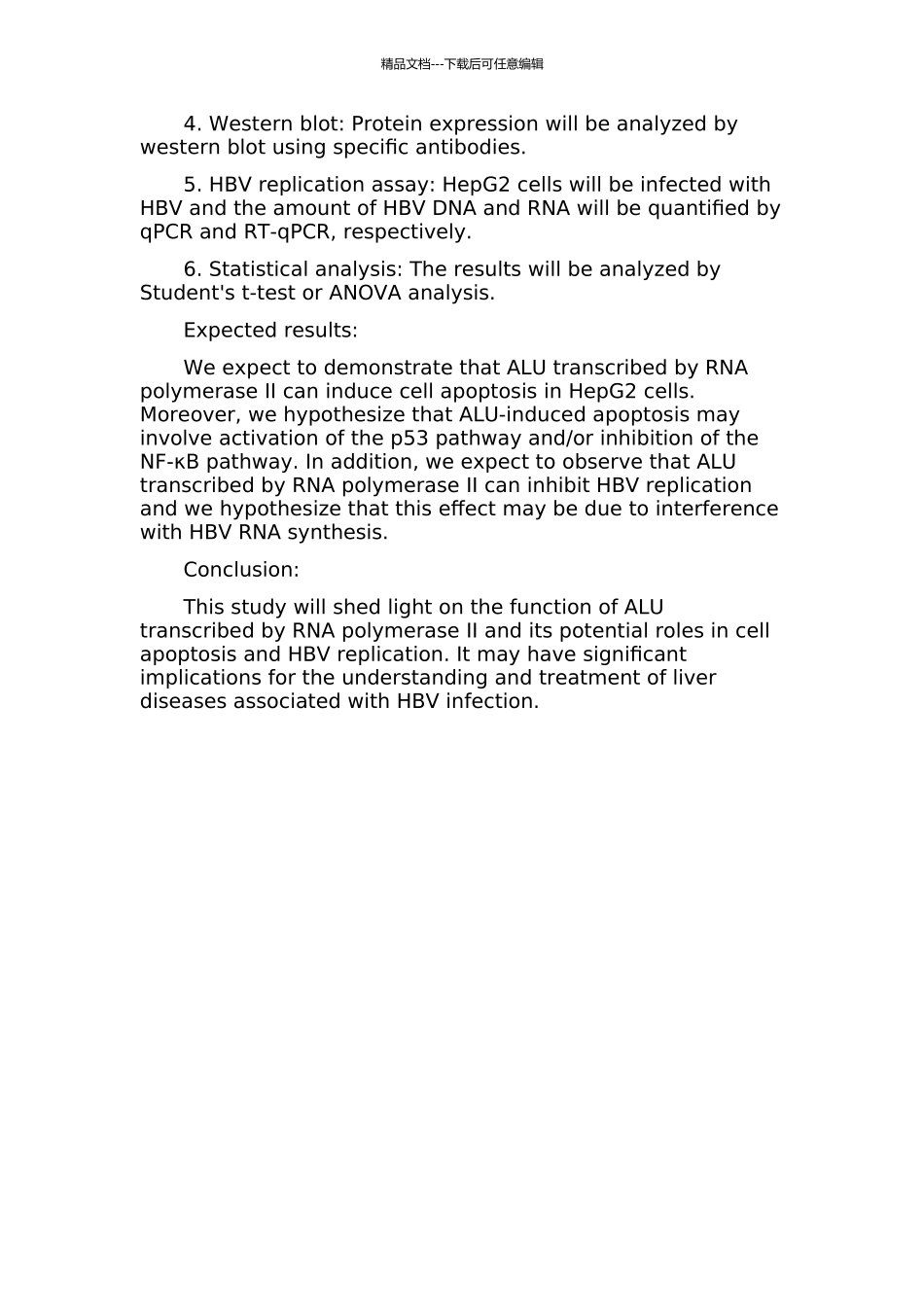精品文档---下载后可任意编辑RNA 聚合酶Ⅱ转录的 ALU 对细胞凋亡及 HBV 复制的影响的开题报告Title: The effects of ALU transcribed by RNA polymerase II on cell apoptosis and HBV replicationIntroduction:ALU is a highly repetitive DNA sequence found in primate genomes and accounts for more than 10% of the human genome. It is transcribed by RNA polymerase III and processed into non-coding RNAs such as Alu RNAs and small cytoplasmic RNAs. Recently, there have been reports of ALU being transcribed by RNA polymerase II under certain conditions, but the function of this process remains largely unknown. In this study, we investigate the effects of ALU transcribed by RNA polymerase II on cell apoptosis and HBV replication.Objectives:The objectives of this study are:1. To determine whether ALU transcribed by RNA polymerase II can induce cell apoptosis.2. To investigate the mechanism of ALU-induced cell apoptosis.3. To determine whether ALU transcribed by RNA polymerase II affects the replication of HBV.4. To investigate the mechanism of ALU's effect on HBV replication.Methods:1. Cell culture: HepG2 cells will be cultured in DMEM supplemented with 10% FBS, 100 U/mL penicillin, and 100 μg/mL streptomycin.2. Transfection: The cells will be transfected with plasmids containing ALU transcribed by RNA polymerase II using Lipofectamine 3000.3. Cell apoptosis assay: Apoptosis will be detected by flow cytometry using Annexin-V/PI staining.精品文档---下载后可任意编辑4. Western blot: Protein expression will be analyzed by western blot using specific antibodies.5. HBV replication assay: HepG2 cells will be infected with HBV and the amount of HBV DNA and RNA will be quantified by qPCR and RT-qPCR, respectively.6. Statistical analysis: The results will be analyzed by Student's t-test or ANOVA analysis.Expected results:We expect to demonstrate that ALU transcribed by RNA polymerase II can induce cell apoptosis in HepG2 cells. Moreover, we hypothesize that ALU-induced apoptosis may involve activation of the p53 pathway and/or inhibition of the NF-κB pathway. In addition, we expect to observe that ALU transcribed by RNA polymerase II can inhibit HBV replication and we hypothesize that this effect may be due to interference with HBV RNA synthesis.Conclusion:This study will shed light on the function of ALU transcribed by RNA polymerase II and its potential roles in cell apoptosis and HBV replication. It may have significant implications for the understanding and treatment of liver diseases associated with HBV infection.

